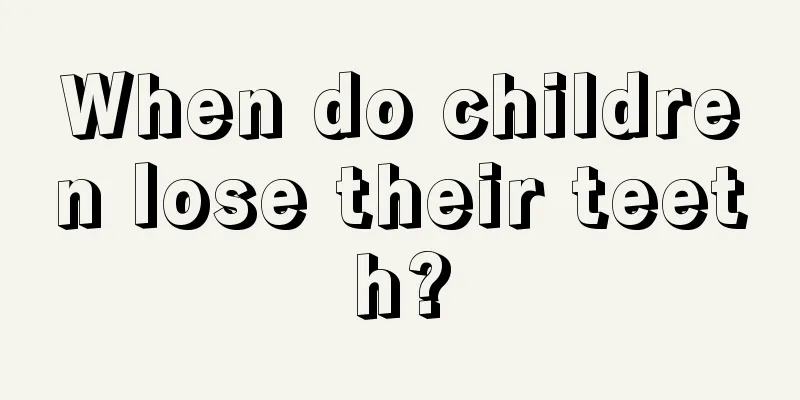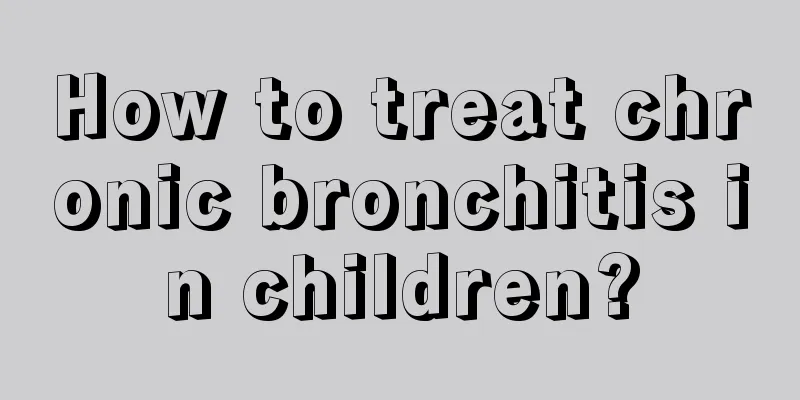When do children lose their teeth?

|
Regarding children's tooth replacement, it is actually not good to replace them too early or too late. Babies generally need to replace 20 deciduous teeth in their lifetime, so when the teeth are replaced, special attention should be paid to not eating sweets. Next, we will make the following introduction to the question of when children will lose their teeth, to help parents understand each tooth replacement period, make good preparations in advance, and prevent babies from feeling fear and panic during the tooth replacement process. Children usually start to lose their teeth around the age of 6. The physiological shedding of the first deciduous tooth usually occurs around the age of 6, but it can also occur as early as 4 years old, or as late as 7-8 years old, so there is no need to worry. Naturally fallen deciduous teeth have no roots and the fallen surface appears eroded. Parents should pay attention to observe and not confuse them with broken roots of deciduous teeth. People grow teeth twice in their life, namely deciduous teeth and permanent teeth. There are 20 deciduous teeth, which usually start to erupt around 6 months old and are fully grown at 2-3 years old. There are 28-32 permanent teeth (the number of wisdom teeth is 0-4), which usually start to erupt around 6 years old and 28 are fully grown at 12-13 years old (wisdom teeth vary from person to person). Therefore, the tooth replacement period is usually between 6 and 12 years old. There are certain rules for tooth replacement. Simply put, it is a certain time and a certain order, following the principle of "left-right symmetry, first lower and then upper". Left-right symmetry, first lower and then upper refers to teeth with the same name. There are two different opinions about which permanent tooth grows first in children. One is that the first permanent molar that usually grows around the age of 6 grows close to the last deciduous molar, called the sixth-year molar, which erupts slightly earlier than or at the same time as the lower central incisor. Another theory is that children first replace the two middle front teeth in the lower row. Dentists say that this may be different for each child. Children grow upper central incisors and lower lateral incisors at the age of 6-8, upper lateral incisors at the age of 8-9, first and second bicuspids at the age of 10-12, and permanent canines at the age of 10-11. Things to note when your child is changing their teeth: 1. Always pay attention to the development of teeth: Always pay attention to the growth of children's deciduous teeth and permanent teeth, and take children to see a dentist regularly so that problems can be discovered at any time and solved early. 2. Develop a good habit of brushing teeth: Children should be urged to brush their teeth every day. It is best for adults to help brush their teeth before going to bed at night, especially the upper teeth, which are more difficult to clean and are most likely to cause tooth decay. The six-year molars are also not easy to brush because they are located at the innermost part of the mouth. You should use toothpaste and toothbrushes specially designed for children. The toothbrush head should be as small as possible, otherwise the child will easily vomit when the toothbrush reaches the innermost part. In addition to brushing teeth, it is best for children to rinse their mouths after each meal to maintain oral hygiene. 3. Promote calcium absorption: To enhance children's calcium absorption, encourage your baby to eat more foods high in calcium, such as milk, cheese, tofu, canned fish, etc. At the same time, take in enough vitamin C and D, because these two vitamins are helpful for calcium absorption. 4. Correct bad habits: Correct children’s bad habits in time, such as sticking out the tongue, biting the tongue, biting fingers or pencils, licking teeth with the tongue, etc. These bad habits will affect the growth of children’s teeth and cause tooth deformation. Early prevention is very important to ensure that children have healthy, beautiful and intact teeth. Now that we are familiar with the question of when children lose their teeth and understand the precautions for tooth replacement, the next step is for parents to pay more attention to their children's dental problems, cultivate the habit of brushing their teeth frequently, and eliminate bad habits such as sucking their fingers, chewing towels, etc. |
<<: What should children eat to soothe the liver, strengthen the spleen and nourish the stomach?
>>: What are the symptoms of anorexia in children?
Recommend
Detailed analysis of children's growth and development chart
The most worrying issue for parents is that their...
Early childhood refers to
A child's growth and development in early chi...
What can I feed my kids to make them grow taller?
Nowadays, the growth environment and living condi...
Does the baby need to take anti-inflammatory medicine for red and swollen gums?
Although toothache is not a serious problem, the ...
What to do if your 1-year-old baby has diarrhea
According to statistics, many families now have o...
What should we do during children’s sensitive period? Parents can respond in this way
Children will have sensitive information at every...
What are the reasons why children shake their heads and blink?
The healthy growth of children is very important....
Why do babies have white hair?
In everyone's impression, white hair usually ...
The newborn farts after struggling hard
There are many strange things about newborns, so ...
How long should children take calcium supplements?
When it comes to calcium supplementation, there a...
What are the symptoms of sinusitis in children?
For families with children suffering from sinusit...
Is it really good to let children eat pine nuts?
Pine nuts are the fruits of pine trees. Pine nuts...
What causes children to vomit yellow water?
When people are infants and young children, their...
What should I do if my child suddenly has a fever in the middle of the night?
Babies are prone to fever in summer. Because the ...
What are the symptoms of baby teething?
After a baby is born and grows up, there will be ...









